Events
| Name | organizer | Where |
|---|---|---|
| MBCC “Doing Business with Mongolia seminar and Christmas Receptiom” Dec 10. 2025 London UK | MBCCI | London UK Goodman LLC |
NEWS
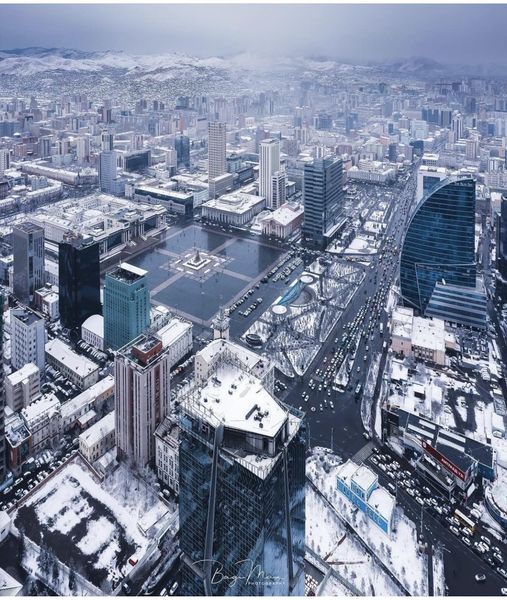
Protesters in Mongolia try to storm state palace www.aljazeera.com
Thousands of people have braved freezing temperatures in Mongolia’s capital to protest against alleged corruption in the country’s coal industry and soaring inflation, with some later attempting to storm government house.
Protesters, many of them young people, rallied in Ulaanbaatar’s central Sukhbaatar Square in -21C (-6F) temperatures on Monday, demanding “justice” against corrupt officials and calling for the country’s parliament to be dismissed.
“Help us our country is collapsing,” read one placard. Some herders also travelled to the city to take part in the rallies.
Protesters are frustrated with the country’s ailing economy, with inflation soaring to 15.2 percent in the wake of Russia’s invasion of Ukraine and closed borders affecting trade with neighbouring China.
People are “suffering incredibly economically,” Jana Zilkova, country director for the aid group Caritas Czech Republic in Ulaanbaatar, told Al Jazeera.
Whistleblower claims that a group of legislators with ties to the coal industry had stolen billions of dollars have added to the discontent.
“People are upset and angry over this case because they were promised the wealth of the country would be shared with them,” Zilkova added.
The police tried to break up the demonstration at 9pm local time (13:00 GMT) but some protesters tried to force their way into the government building, knocking down barriers and breaking windows, according to local media reports. Police intervened and most protesters had left the square a couple of hours later.
Last month, Mongolia’s anti-corruption authority announced that more than 30 officials — including the chief executive of the state-owned coal mining company Erdenes Tavan Tolgoi — were under investigation for embezzlement.
The firm controls the Erdenes Tavan Tolgoi deposits, which contain 7.5 billion tonnes of coking coal — an essential ingredient in the steelmaking process and a key component of Mongolia’s state budget revenue. It is yet to comment on the allegations.
The implicated legislators are alleged to have leveraged their ownership of coal mines and companies that transport coal across the border into China to make illegal profits.
Mongolia sends 86 percent of its exports to China, with coal accounting for more than half the total. A quarter of the country’s gross domestic product (GDP) comes from mining.
Monday’s rally came a day after several hundred protesters gathered in the capital, according to the US embassy in Ulaanbaatar.
Protesters attempted to march on Ikh Tenger, the official residence of the President and Prime Minister, “where they were stopped by a police barricade,” the embassy said.
Khurelsukh Ukhnaa was elected president in June last year, months after he had been forced to resign as prime minister amid public outrage over the treatment of a COVID-19 patient and her newborn baby.
SOURCE: AFP, AL JAZEERA
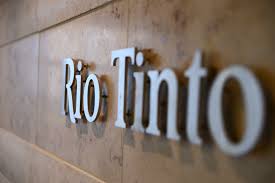
Environmental and human rights assessment of Rio Tinto’s former Panguna copper mine begins www.mining.com
A historic independent environmental and human rights legacy impact assessment of Rio Tinto’s former Panguna copper mine will begin in Bougainville this week.
The Panguna mine was operated by BCL, majority-owned by Rio Tinto, for 17 years from 1972 until 1989, when operations were suspended due to an uprising against the mine and subsequent civil war. A peace agreement was signed in 2001.
Bougainville had a history of small-scale mining. But the identification of a major gold, copper and silver orebody at Panguna in the 1960s prompted Bougainville Copper Ltd, (BCL) a subsidiary of Rio Tinto, to start operations of a major mine.
Last year, Rio Tinto publicly committed to fund the independent assessment in response to a human rights complaint brought by 156 local community members, represented by the Human Rights Law Centre.
The human rights complaint alleges that the massive volume of mine waste pollution left behind by Panguna is putting communities’ lives and livelihoods at risk.
Over a billion tonnes of waste tailings were released directly into the Jaba and Kawerong rivers during operations. Pollution from the mine continues to contaminate the rivers and flood large areas of land downstream, which is having devastating impacts on the lives of thousands of Bougainvilleans, the Human Rights Law Centre said in a press release Monday.
The Legacy Impact Assessment is being overseen by a committee comprised of community leaders, landowners, government representatives, the Human Rights Law Centre and representatives from Rio Tinto and Bougainville Copper Limited.
“This is an important step towards addressing insecurity and pain for the people in the impacted community areas. Thus, we welcome the assessment into the impacts of the Panguna mine as soon as possible,” committee member and traditional landowner Theonila Roka Matbob, said in the statement.
“We are always worrying that the food we eat, the water we drink and the air we breathe is not safe. We worry about levees collapsing and mine waste flooding our lands and communities,” she said. “We welcome Rio Tinto’s commitment to this process,” she said.
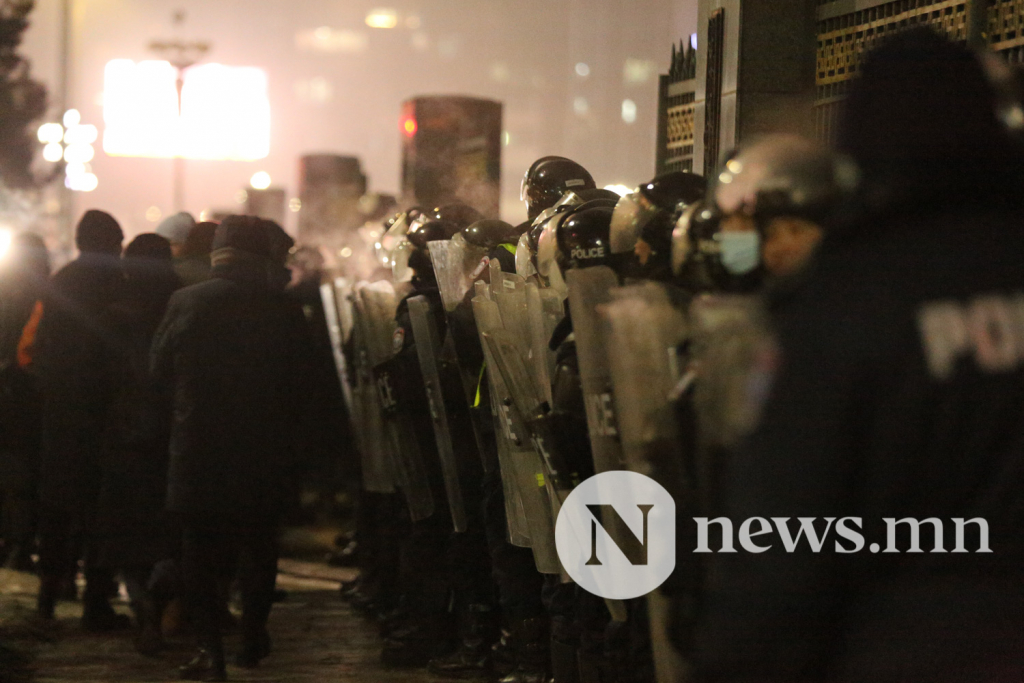
Mass Protests in Mongolia Decry ‘Coal Mafia,’ Corruption www.thediplomat.com
For the second time this year, Mongolians are protesting against the government in significant numbers. In April, protests seemed to primarily grow out of younger Mongolians’ disappointed expectations with the government. Today’s protests were sparked by apparent revelations about grand corruption, involving coal deliveries by state-owned Erdenes Tavan Tolgoi, one of the country’s largest mining companies, to China.
Interpretations in Mongolia continue to focus on political conspiracies rather than actually addressing issues around corruption or the government’s puzzling strategy to stake its fiscal fate on coal at a time when the global energy transition and Mongolia’s potential role in it are pointing in very different directions.
This fall has seen several strands of discussions on coal in Mongolia. First, the government placed the management of state-owned Erdenes Tavan Tolgoi under closer supervision because of allegations regarding shady dealings in its deliveries of coal to China. Then the budget that was passed by the government in November made some fairly heroic assumptions about resumption and volume of coal exports of China to fund a looming round of payments on sovereign debt.
The third string has been a loud chorus focused on energy transition from international donors, many of whom are eager again to engage Mongolia in a values-based cooperation policy following Russian aggression against Ukraine and the changed geopolitical situation that Mongolia finds itself in.
Tavan Tolgoi, a coal deposit in the South Gobi desert, has been the focus of international attention and Mongolian government initiatives for some time. One of the three operators is state-owned Erdenes Tavan Tolgoi (ETT). In contrast to Energy Resources, a private operator, ETT’s reputation in terms of governance but also operational issues is rather poor. While there are frequent expressions of a view that state-owned enterprises should be better at working toward positive outcomes for not only the government but also the general population, ETT’s record on the environment, on community engagement, and on delivering value to Mongolians has been spotty.
There was some good news earlier this year when the completion of a railroad link from the Gobi to the Chinese border was announced, which would move some of Mongolia’s coal transport onto rail. In the fall, however, there were several announcements of increased scrutiny of the ETT management in response to allegations of improper dealings surrounding export contracts of coal. A further decision on ETT came in late November when the government announced the ambition to turn its operational nature into more of a sovereign wealth fund. Today, there were further discussions following a press conference that alleged more corruption at ETT.
It is this announcement of corruption findings that prompted protests by what images suggest to be hundreds if not thousands of Mongolians on December 5. Protesters can be seen storming Government House and dismantling the fences around the building in scenes that are more reminiscent of the cycles of protest and revolutions in other Asian countries like Kyrgyzstan. Government House includes Mongolia’s parliamentary chambers and officers, as well as some offices of the executive.
Yet, Mongolia’s twittering classes are primarily exercised by various conspiracy theories that allege President Khurelsukh Ukhnaa’s involvement in orchestrating protests just ahead of a Mongolian People’s Party congress that is likely to add further pressure on Prime Minister Oyun-Erdene Luvsannamsrai’s government.
Allegations of grand corruption or the existence of a “coal mafia” in parliament seem to be interpreted primarily in terms of backroom dealings rather than the reality of the existence of such corruption. Curiously, the political discourse has little connection to Mongolians’ frustration with corruption at a time when post-COVID economic challenges, including corruption, are leading to real daily struggles of consumer survival.
Further complicating the question of coal and corruption is the very future of the coal industry. As one of the dirtiest energy sources, coal use has been a particular target for those advocating reduced global emissions. Yet Mongolia’s fiscal planning seems content to ignore that trend.
The budget that was passed in the Mongolian parliament in mid-November was drafted partly with significant payments on sovereign debt that are due in 2023 in mind. The budget included revenue projections that assume significant demand from China in volume and at prices that seem rather optimistic.
While copper exports from the very large Oyu Tolgoi mine that is majority-owned by Rio Tinto will power future Mongolian budgets, the budget imagines that immediate fiscal needs will be met by coal exports. Regardless of the realism of the price and volume assumptions behind this budget, it seems unlikely that sovereign debt payments will be met entirely by these projected revenues and another round of re-financing conversations with international organizations seems likely.
All this comes at a time where many parts of the world are waking up to the realities of a climate catastrophe that will demand radical changes to energy policies. Many Mongolian politicians and business people feel aggrieved by expectations on Mongolia to atone for the environmental sins of developed countries when coal is one of Mongolia’s main resources and is seen as a necessary element in economic development domestically.
Yet, many donor organizations and many of Mongolia’s Third Neighbors are looking to encourage an energy transition domestically that not only mitigates against emissions but makes a positive contribution to the global energy transition by developing Mongolia’s ample alternative resources in solar, wind, and hydropower. As these Third Neighbors are re-embracing Mongolia in a changed geopolitical context cognizant of the country’s dependence on Russia when it comes to fuels, for example, creative thinking will be needed about how to bring about a “just transition” in the particular case of Mongolia.
Responses to the protests on December 5 were limited initially, but parliament also voted on and ultimately rejected the declaration of a state of emergency. These kind of large protests have been rare in winter in Mongolia in the past; spring has been the most active “protest season.” They are especially surprising at a time Ulaanbaatar is experiencing very cold weather after an initially fairly mild fall.
Even if some of these demonstrations are being instrumentalized for political purposes, they do seem to be a further expression of Mongolians’ frustrations with their government and its inability to deliver on promises made and expectations raised.
GUEST AUTHOR
Julian Dierkes
Julian Dierkes teaches in the Master of Public Policy and Global Affairs at the University of British Columbia.
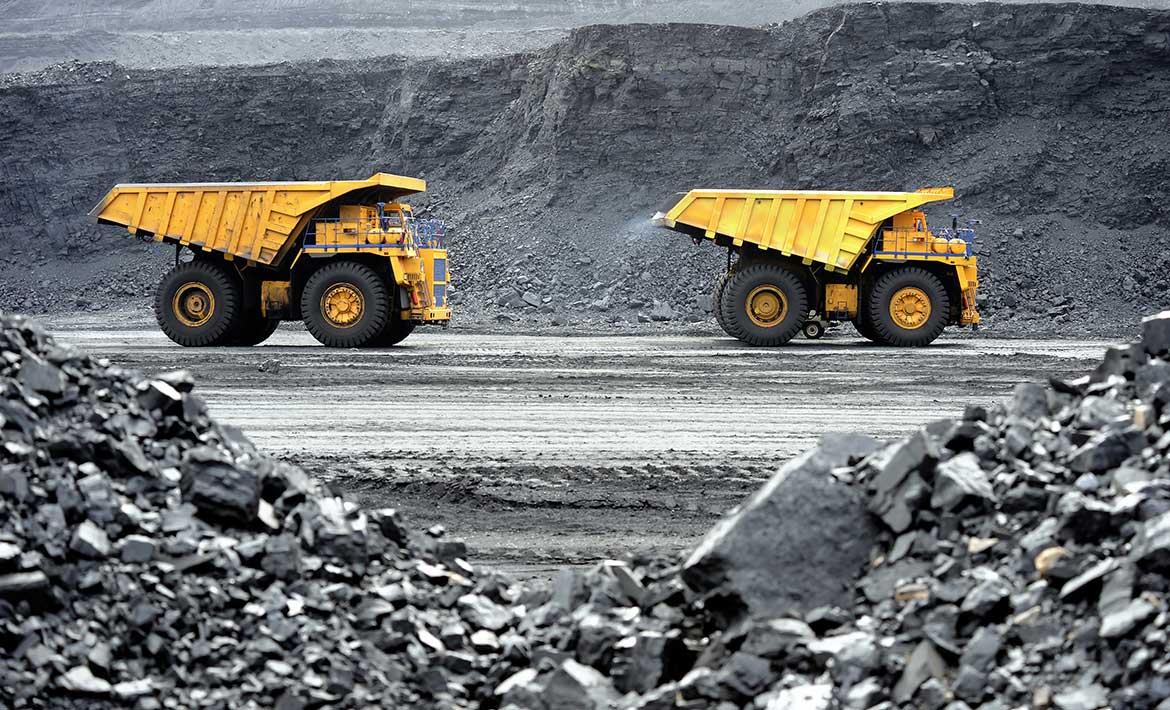
Stolen coal revenue: Mongolians demonstrating for third day www.news.mn
Today (5 December), an increasingly angry demonstration has entered its third day in Ulaanbaatar, capital city of Mongolia after large amount of coal revenue was stolen. According to unofficial sources, some 6.5 million tonnes of coal worth of MNT 60 trillion were stolen.
Justice Minister Kh.Nyambaatar told news.mn on Monday that Mongolian Government has requested Beijing through diplomatic line to cooperate with Prosecutorial Agency In the Republic of China investigating the coal theft case.
Considering one truck transports approximately 90-100 tons of coal or produces more than 10 million tons of coal in a year, Mongolian officials have begun comparing the Chinese customs information of registrations of cars that entered and exited the country, with our customs data.
Mongolia sends 86 percent of its exports to China, with coal accounting for more than half of that total. Mongolia is keen to chip in, shipping 19 million metric tons of coal to China so far this year, according to the National Statistical Office, already exceeding 2021’s 16 million total.The value of Mongolia’s coal exports jumped to $4.5 billion in the first nine months of 2022, almost triple what they were over the same period last year.

Mongolian Airways Cargo purchases 2 Airbus planes www.news.mn
The Mongolian air carrier Mongolian Airways Cargo purchased 2 Airbus A330-200 and A320-200 planes.
These planes landed at the former Buyant-Ukhaa airport on 2 December.
The planes will fly to transport hubs in Asia and Europe, such as Berlin, Moscow, Yekaterinburg, Singapore, Urumqi and Shanghai. In addition to meat, meat products, wool, cashmere and rare-earth elements, it is possible to transport mining equipment, large items and special cargo from Mongolia.
Mongolia has the exclusive rights to make frequent cargo flights to the Russian Federation and the People’s Republic of China, which have not been used until now.
With the completion of its cargo terminal, ‘Mongolian Airways Cargo’ will provide international express mail and a comprehensive logistics services to the customers.
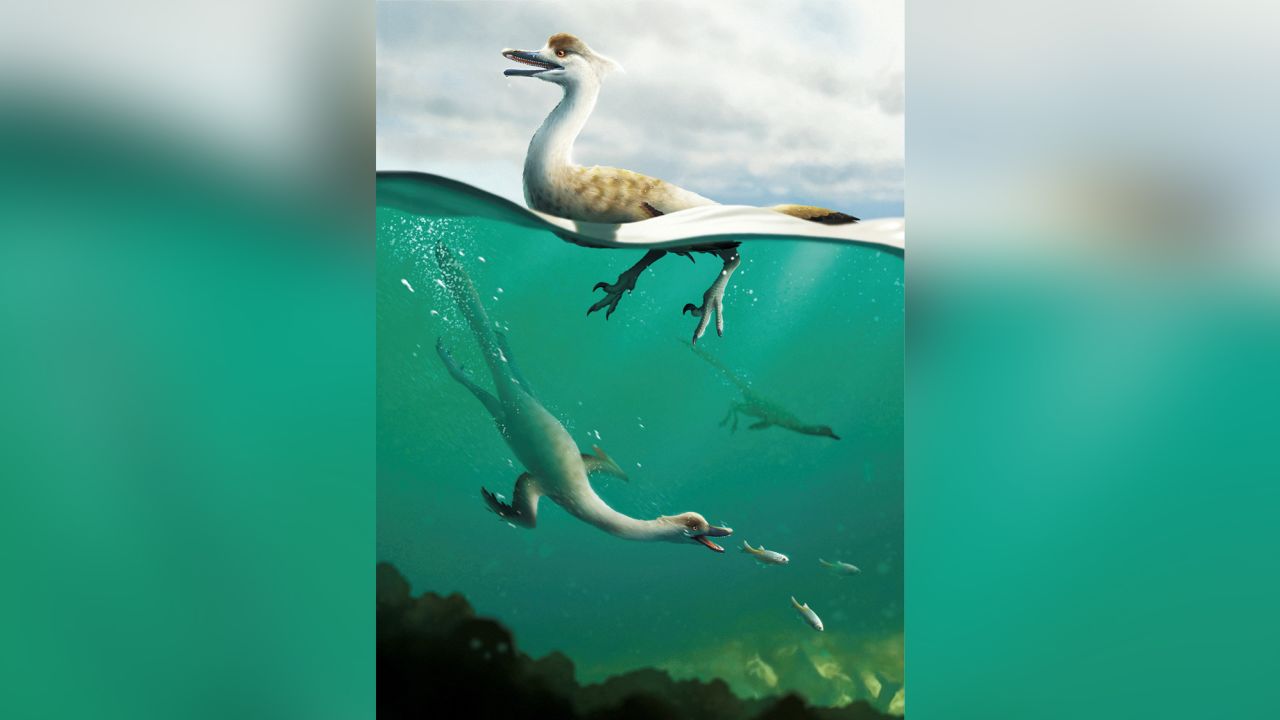
A new species of dinosaur might have dived like a duck to catch its prey www.cnn.com
A new study found evidence at least one species of dinosaur may have been an adept swimmer, diving into the water like a duck to hunt its prey.
Researchers captured footage of the black-naped pheasant-pigeon 140 years after the bird was last documented by scientists.
This bird hadn't been documented by scientists since 1882. Then they captured video of it in Papua New Guinea
The study, published in Communications Biology on December 1, describes a newly-discovered species, Natovenator polydontus. The theropod, or hollow-bodied dinosaur with three toes and claws on each limb, lived in Mongolia during the Upper Cretaceous period, 145 to 66 million years ago.
Scientists from Seoul National University, the University of Alberta, and the Mongolian Academy of Sciences collaborated on the paper.
The researchers pointed out Natovenator had streamlined ribs, like the those of diving birds.
“Its body shape suggests that Natovenator was a potentially capable swimming predator, and the streamlined body evolved independently in separate lineages of theropod dinosaurs,” wrote the authors.
The Natovenator specimen is very similar to Halszkaraptor, another dinosaur discovered in Mongolia, which scientists believe was likely semiaquatic. But the Natovenator specimen is more complete than the Halszkaraptor, making it easier for scientists to see its streamlined body shape.
Both Natovenator and Halszkaraptor likely used their forearms to propel them through the water, the researchers explained.
David Hone, a paleontologist and professor at Queen Mary University of London, told CNN it is difficult to say exactly where Natovenator falls on the spectrum of totally land-dwelling to totally aquatic. But the specimen’s arms “look like they’d be quite good for moving water,” he said. Hone participated in the peer review for the Communications Biology study.
Additionally, Natovenator had dense bones, which are essential for animals diving below the water’s surface.
As the authors wrote, it had a “relatively hydrodynamic body.”
The next step, Hone said, would be to perform modeling of the dinosaur’s body shape to help scientists understand exactly how it might have moved. “Is it paddling with its feet, a bit of a doggy-paddle? How fast could it go?”
Further research should also look at the environment in which Natovenator lived. The specimen was discovered in Mongolia’s Gobi Desert, but there is evidence there have been lakes and other bodies of water in the desert in the past.
“There is a real question of, OK, you’ve got a swimming dinosaur in the desert, what’s it swimming in?” he said. “Finding the fossil record of those lakes is gonna be tough, but sooner or later, we might well find one. And when we do, we might well find a lot more of these things.”
Nizar Ibrahim, a senior lecturer in paleontology at the University of Portsmouth, whose research has included findings indicating Spinosaurus was likely semiaquatic, told CNN he isn’t entirely convinced by the study’s findings yet. He argued more rigorous quantitative analysis would have made the findings more compelling.
“I would have liked to see, for example, a real solid description of the bone density, the osteohistology of the animal, within a larger data set,” he said. “Even the rib anatomy, if they had kind of put that into a larger picture – the big data set that would have been helpful.”
The “anatomical evidence is less straightforward” for a swimming Natovenator than it was for a swimming Spinosaurus, he said.
And like Hone, he’s also curious about which waters exactly Natovenator might have been swimming in. “The environment this animal was found in Mongolia, is kind of the exact opposite of what you would expect for a water-loving animal,” he said.
But he hopes the study can help open the door for more expansive ideas about dinosaur behavior. Dinosaurs were previously thought of as strictly terrestrial, but increasingly, evidence has emerged suggesting at least some species spent as much time in the water as they did on land.
“I’m sure that there will be many, many more surprises,” said Ibrahim. “And we’ll find out the dinosaurs were not just around for a very long time, but also, you know, really diverse and very good at invading new environment.”
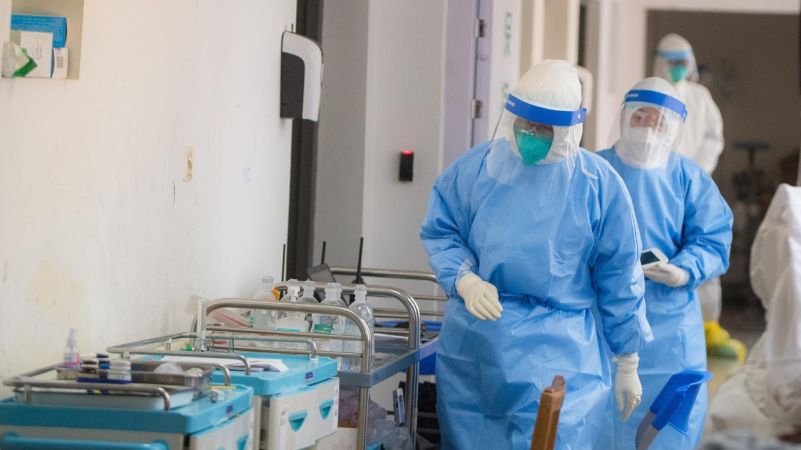
Mongolia confirms 61 COVID-19 cases in past 24h www.akipress.com
61 new COVID-19 cases were confirmed in Mongolia in past 24 hours.
27 of them were contacts in Ulaanbaatar, and 34 were recorded in the regions. No imported cases were found.
The total number of deaths from coronavirus remained 2,135.
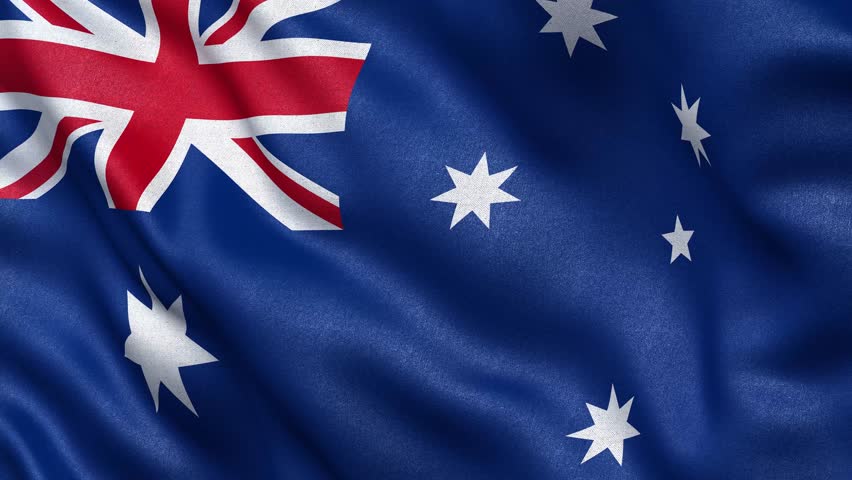
‘Sharing a bed with a bear and a dragon’, Mongolia aims closer ties with Australia www.smh.com.au
Singapore: Mongolia’s deputy prime minister has called for closer ties between Canberra and Ulaanbaatar as the central Asian country finds itself wedged between the geopolitical ambitions of Russia to its north and China to its south.
Declaring Mongolia shared “common values with Australia, such as democracy and human rights”, Amarsaikhan Sainbuyan said the former Soviet satellite state would “not support forceful actions, whether it is China, Russia or any other country around the world”.
Mongolia has been largely neutral in its positions on Russia’s war in Ukraine and China’s threats toward its democratic neighbour Taiwan because of its economic dependence on the two powers. But as tensions grow stronger, it has started carving out deeper relations with third countries and a more independent foreign policy.
“Being directly situated in between these two big neighbours, whether it is on the China side, or the Russian side it directly affects Mongolia’s economy. It is one of our main concerns,” Sainbuyan told The Sydney Morning Herald and The Age.
“Instability in the region will affect all countries, especially Mongolia. That’s why we believe this should be resolved peacefully.
Sainbuyan reiterated Mongolia’s support for the one-China policy but criticised Beijing’s actions in Inner Mongolia, the northern Chinese province that abuts its southern border. Chinese authorities placed restrictions on Mongolian language learning in schools in 2020 and activists warned the cultural crackdown on the region is intensifying after Beijing’s suppression of Xinjiang. A joint United States and the European Union statement released on Friday criticised China’s “human rights violations” in the region.
“We respect and also value this human right of freedom of speech and freedom of learning, especially having this issue related to mother language and culture,” Sainbuyan said.
“Culture should be respected and treated fairly. We have ethnic groups like Kazakhs in Mongolia. We do not restrict their freedom of learning their native language. This is an international human rights issue, and it should be maintained and protected.”
Mongolian President Ukhnaagiin Khurelsukh visited his Chinese counterpart Xi Jinping in Beijing last week, when Xi urged him to pursue “integrated development”. Khurelsukh described their friendship as “ironclad”.
“We have witnessed a fast development in trade and political relations between the two countries,” Teng Jianqun from the China Institute of International Studies told CGTN in Beijing.
But Sainbuyan raised concerns about China’s trade strikes on Australia. The sanctions have covered $20 billion in exports across half-a-dozen industries following disputes with Beijing over national security, human rights, and COVID-19.
”International trade should be based on basic principles, international rules, and international law. It should be fair and competitive. Whether it’s China or Mongolia or Australia, we all have our own interests in economic and national, and international co-operation. So, everything should be based on basic international rules and principles.”
The sanctions were a key point of discussion between Sainbuyan, Foreign Minister Penny Wong, and Deputy Prime Minister Richard Marles when he visited Canberra in September.
Australia was China’s largest supplier of thermal coal and a significant player in its coking coal market until Beijing imposed the restrictions in 2020. In March 2021, Mongolian coking coal exports grew by more than 4270 per cent compared to the previous year as it displaced the $10.4 billion Australian coal export market. Mongolia has continued to be the dominant supplier since but that could shift as relations between Beijing and Canberra show signs of a thaw.
Sainbuyan said Mongolia did not see Australia as a competitor. “We see it in different ways,” he said. “Instead, we are trying to make better infrastructure environmentally friendly and economically competitive, while also working towards increasing the export volume as much as possible.”
Mining accounts for 26 per cent of Mongolia’s economy, damaging its environment and leaving it heavily dependent on fossil fuels as climate change targets put pressure on developing countries to diversify their resource base. Australia’s Climate Change and Energy Minister Chris Bowen led negotiations over payments from wealthy economies to developing countries at COP27 in November after a $148 billion funding target in 2020 was never met, fuelling tensions during discussions in at Sharm el-Sheikh.
“Developed countries have already used coal as much as they could. At the same time, they are moving rapidly to wind energy and other sources,” Sainbuyan said. “But that does not mean Mongolia can keep up with them unless they support Mongolia. Mongolia has hard and harsh climates, it is -40 degrees in winter. Imagine if we only have solar power. It is not easy.
“It takes time, and it needs investment, international policy, and financial support.”
In February, his government signed a deal to build the Soyuz–Vostok gas pipeline, which will carry natural gas from Russia to China via its territory. Sainbuyan said it would help wean Mongolia off coal, but critics argue it will make it more dependent on Russian energy while also helping it find the world’s largest alternative markets as Europe shuns Russian gas over the war in Ukraine.
“Mongolia sits in a particularly precarious situation with China and Russia as its only neighbours, one that is sometimes described as sharing a bed with a bear and a dragon,” said Julian Dierkes, an associate professor at the University of British Columbia in analysis published by Foreign Policy.
“As much as Mongolia has sought to chart its own course for the last three decades, the walls have been closing in as China and Russia’s partnership deepens.”
Sainbuyan defended the pipeline.
“It’s not only about Mongolia-Russia relations, trade, or economic issues,” he said. “We consider this regional infrastructure and energy supply mega project will not only benefit Russia and Mongolia but the whole region should be benefitting from this project.”
Sainbuyan said the drawings and technical details of the pipeline had been completed, and it had now been moved to a state tender. He said construction on the project, which will bring 50 billion cubic metres of gas to China annually, was expected to begin by the northern spring.
BY: Eryk Bagshaw
Eryk Bagshaw is the North Asia correspondent for The Sydney Morning Herald and The Age.

3x3 basketball: can Hong Kong follow Mongolia’s route to the Olympics? www.scmp.com
As basketball stars departed last week following the FIBA 3x3 World Tour Hong Kong Masters, they left behind the question of whether the city could become a force in the sport’s shortened form – and the answer may lie in Mongolia.
The best-performing Asian team at the Masters were Mongolian side Ulaanbaatar, in keeping with their country’s progress in the format since it actively developed 3x3 a decade ago. Some believe Hong Kong could aim to follow the template of the continent’s now leading nation, perhaps all the way to the Olympics.
Latvia and the United States won the men’s and women’s gold respectively when 3x3 made its Olympic debut in Tokyo last year, with Russia taking silver in both, but Mongolia’s women’s team were a notable inclusion, too.
Their appearance at the Games was the consequence of decisions and funding in Mongolia that grew 3x3 rapidly – something that Hong Kong could emulate, according to Kenny Wong, CEO of Masters organiser M1 and vice-president of the Hong Kong Basketball Association (HKBA).
“There has been no shortage of great players in Hong Kong over the years, but to assemble a team of 12 to 15 players [for full-court basketball] is way more difficult than four to six [for 3x3],” Wong said.
“Mongolia were my inspiration from day one. I think in [about a decade], we could compete like them if we devote ourselves to 3x3.”
Wong said Mongolia was a realistic comparison because its traditional basketball was at a similar level to Hong Kong’s.
He added that one next step would be to seek help from more advanced countries to develop coaching specific to 3x3.
“That is the root of everything – a complete system is essential,” Wong said. “That is also why we hosted the tournament, to help players to familiarise with the game and establish contacts with world elites.”
It looks a long road, with Hong Kong ranked 21st in the region and 85th in the world, but the Olympics may not be an unattainable dream if the HKBA allocates time and investment.
Bryant Austin, who led invitation side Team Hong Kong at the Masters and plays for Shung Tak Alumni Eagles in the local A1 Division, believes the city “can make an impact in 3x3”.
“We have lots of talented players in the A1 Division,” said the 35-year-old from Ohio. “We have tall players as well as small players with outstanding quickness. [If 3x3 is developed here] Hong Kong have a great chance.”
Echoing him was Tyler Kepkay, who led Team Hong Kong’s scoring against Riga – made up of Latvian Olympic champions – in the Masters.
“You have to be able to shoot, be physical and be agile,” the Winling ace said, adding that Hong Kong players already play in a physical league with “lots of fouls going on”.
He and Austin cited Ricky Yang, Simba Pok, Tsai Choi-kwan and Leung Shiu-wah as local names to watch.
However, investment is needed. Mongolia’s 3x3 system is sponsored by the Mongolian Mining Corporation, a public company listed on the Hong Kong stock exchange. The country is set to host FIBA’s Women’s Series Final and Nations League next year, as well as the FIBA 3x3 U23 World Cup in 2024, and is ranked in the top six in all 3x3 age groups for men and women.
Smart recruitment helps, too. Among the quartet playing in Hong Kong for Ulaanbaatar was player-coach Steve Sir, a Canadian 3x3 legend who is No 25 in FIBA’s individual rankings. He is also coach and director of player development for Mongolia’s men’s and women’s national 3x3 teams.
South China player Tommy Nixon said Sir “was recruited to help guide their team and put them forth to compete in as many global events as possible”.
Learning from the best is essential, Kepkay said. “Watch how the best play, figure out what style suits the players and work on those skills, then in five, six or seven years they can compete at that level.”
Mike joined SCMP in 2022 as a senior reporter with 20 years of experience in sports journalism across various platforms including print, TV & online media. He previously worked in Singapore as a show producer with global sports network ESPN, before relocating back to Hong Kong with a local newspaper. Mike is a true sports lover with particular interest in basketball and football, and has been rooting for Liverpool FC since 1988.

Chinese astronauts return to Earth after six-month mission www.bbc.com
Three Chinese astronauts have returned to Earth after completing a six-month mission aboard China's space station.
They left for space on 5 June to oversee the final construction stage of the Tiangong space station, which was completed in November.
The crew touched down on board the Shenzhou-14 spacecraft on Sunday in China's autonomous region of Inner Mongolia.
China's space agency declared the mission a "complete success".
Commander Chen Dong and teammates Liu Yang and Cai Xuzhe said they were feeling well after landing, in audio aired by state broadcaster CCTV.
Staff at the landing site carried the crew out of the exit capsule, which landed shortly after 20:00 local time, about nine hours after undocking from the space station.
Ms Yang, China's first female astronaut, said she had an unforgettable memory in the space station and "is excited to return to the motherland," Xinhua state news agency reported.
While in space, the three astronauts oversaw the arrival of the second and third modules for Tiangong and carried out three spacewalks to check and test the new facilities.
Liu Yang, who took part in the mission, is China's first female astronaut
A new crew of three Chinese astronauts arrived at the space station to make its first in-orbit crew handover on Wednesday.
The new crew lifted off in the Shenzhou-15 spacecraft from the Jiuquan Satellite Launch Centre in the Gobi Desert in north-west China.
They will live on the station for six months. It will be the second permanently inhabited space outpost, after the Nasa-led International Space Station from which China was excluded in 2011.
It is the last of 11 missions required to assemble the station that is expected to operate for around a decade and run experiments in near-zero gravity.
The new crew will focus on installing equipment and facilities around the space station, a spokesperson for the China Manned Space Administration said.
China is only the third country in history to have put both astronauts into space and to build a space station, after the Soviet Union and the US.
Tiangong space station, or "Heavenly Palace", is China's new permanent space station. The country has previously launched two temporary trial space stations, named as Tiangong-1 and Tiangong-2.
Over the next decade of the Tiangong's operation, it is expected China will launch two crewed missions to the station each year.
China has opened the selection process for astronauts for future missions to applicants from the "special administrative regions" of Macau and Hong Kong, who have previously been excluded.
China put its first satellite into orbit in 1970 - as it went through massive disruptions caused by the Cultural Revolution.
In the past 10 years, China has launched more than 200 rockets.
It has already sent an unmanned mission to the Moon, called Chang'e 5, to collect and return rock samples. It planted a Chinese flag on the lunar surface - which was deliberately bigger than previous US flags.
- «
- 1
- 2
- 3
- 4
- 5
- 6
- 7
- 8
- 9
- 10
- 11
- 12
- 13
- 14
- 15
- 16
- 17
- 18
- 19
- 20
- 21
- 22
- 23
- 24
- 25
- 26
- 27
- 28
- 29
- 30
- 31
- 32
- 33
- 34
- 35
- 36
- 37
- 38
- 39
- 40
- 41
- 42
- 43
- 44
- 45
- 46
- 47
- 48
- 49
- 50
- 51
- 52
- 53
- 54
- 55
- 56
- 57
- 58
- 59
- 60
- 61
- 62
- 63
- 64
- 65
- 66
- 67
- 68
- 69
- 70
- 71
- 72
- 73
- 74
- 75
- 76
- 77
- 78
- 79
- 80
- 81
- 82
- 83
- 84
- 85
- 86
- 87
- 88
- 89
- 90
- 91
- 92
- 93
- 94
- 95
- 96
- 97
- 98
- 99
- 100
- 101
- 102
- 103
- 104
- 105
- 106
- 107
- 108
- 109
- 110
- 111
- 112
- 113
- 114
- 115
- 116
- 117
- 118
- 119
- 120
- 121
- 122
- 123
- 124
- 125
- 126
- 127
- 128
- 129
- 130
- 131
- 132
- 133
- 134
- 135
- 136
- 137
- 138
- 139
- 140
- 141
- 142
- 143
- 144
- 145
- 146
- 147
- 148
- 149
- 150
- 151
- 152
- 153
- 154
- 155
- 156
- 157
- 158
- 159
- 160
- 161
- 162
- 163
- 164
- 165
- 166
- 167
- 168
- 169
- 170
- 171
- 172
- 173
- 174
- 175
- 176
- 177
- 178
- 179
- 180
- 181
- 182
- 183
- 184
- 185
- 186
- 187
- 188
- 189
- 190
- 191
- 192
- 193
- 194
- 195
- 196
- 197
- 198
- 199
- 200
- 201
- 202
- 203
- 204
- 205
- 206
- 207
- 208
- 209
- 210
- 211
- 212
- 213
- 214
- 215
- 216
- 217
- 218
- 219
- 220
- 221
- 222
- 223
- 224
- 225
- 226
- 227
- 228
- 229
- 230
- 231
- 232
- 233
- 234
- 235
- 236
- 237
- 238
- 239
- 240
- 241
- 242
- 243
- 244
- 245
- 246
- 247
- 248
- 249
- 250
- 251
- 252
- 253
- 254
- 255
- 256
- 257
- 258
- 259
- 260
- 261
- 262
- 263
- 264
- 265
- 266
- 267
- 268
- 269
- 270
- 271
- 272
- 273
- 274
- 275
- 276
- 277
- 278
- 279
- 280
- 281
- 282
- 283
- 284
- 285
- 286
- 287
- 288
- 289
- 290
- 291
- 292
- 293
- 294
- 295
- 296
- 297
- 298
- 299
- 300
- 301
- 302
- 303
- 304
- 305
- 306
- 307
- 308
- 309
- 310
- 311
- 312
- 313
- 314
- 315
- 316
- 317
- 318
- 319
- 320
- 321
- 322
- 323
- 324
- 325
- 326
- 327
- 328
- 329
- 330
- 331
- 332
- 333
- 334
- 335
- 336
- 337
- 338
- 339
- 340
- 341
- 342
- 343
- 344
- 345
- 346
- 347
- 348
- 349
- 350
- 351
- 352
- 353
- 354
- 355
- 356
- 357
- 358
- 359
- 360
- 361
- 362
- 363
- 364
- 365
- 366
- 367
- 368
- 369
- 370
- 371
- 372
- 373
- 374
- 375
- 376
- 377
- 378
- 379
- 380
- 381
- 382
- 383
- 384
- 385
- 386
- 387
- 388
- 389
- 390
- 391
- 392
- 393
- 394
- 395
- 396
- 397
- 398
- 399
- 400
- 401
- 402
- 403
- 404
- 405
- 406
- 407
- 408
- 409
- 410
- 411
- 412
- 413
- 414
- 415
- 416
- 417
- 418
- 419
- 420
- 421
- 422
- 423
- 424
- 425
- 426
- 427
- 428
- 429
- 430
- 431
- 432
- 433
- 434
- 435
- 436
- 437
- 438
- 439
- 440
- 441
- 442
- 443
- 444
- 445
- 446
- 447
- 448
- 449
- 450
- 451
- 452
- 453
- 454
- 455
- 456
- 457
- 458
- 459
- 460
- 461
- 462
- 463
- 464
- 465
- 466
- 467
- 468
- 469
- 470
- 471
- 472
- 473
- 474
- 475
- 476
- 477
- 478
- 479
- 480
- 481
- 482
- 483
- 484
- 485
- 486
- 487
- 488
- 489
- 490
- 491
- 492
- 493
- 494
- 495
- 496
- 497
- 498
- 499
- 500
- 501
- 502
- 503
- 504
- 505
- 506
- 507
- 508
- 509
- 510
- 511
- 512
- 513
- 514
- 515
- 516
- 517
- 518
- 519
- 520
- 521
- 522
- 523
- 524
- 525
- 526
- 527
- 528
- 529
- 530
- 531
- 532
- 533
- 534
- 535
- 536
- 537
- 538
- 539
- 540
- 541
- 542
- 543
- 544
- 545
- 546
- 547
- 548
- 549
- 550
- 551
- 552
- 553
- 554
- 555
- 556
- 557
- 558
- 559
- 560
- 561
- 562
- 563
- 564
- 565
- 566
- 567
- 568
- 569
- 570
- 571
- 572
- 573
- 574
- 575
- 576
- 577
- 578
- 579
- 580
- 581
- 582
- 583
- 584
- 585
- 586
- 587
- 588
- 589
- 590
- 591
- 592
- 593
- 594
- 595
- 596
- 597
- 598
- 599
- 600
- 601
- 602
- 603
- 604
- 605
- 606
- 607
- 608
- 609
- 610
- 611
- 612
- 613
- 614
- 615
- 616
- 617
- 618
- 619
- 620
- 621
- 622
- 623
- 624
- 625
- 626
- 627
- 628
- 629
- 630
- 631
- 632
- 633
- 634
- 635
- 636
- 637
- 638
- 639
- 640
- 641
- 642
- 643
- 644
- 645
- 646
- 647
- 648
- 649
- 650
- 651
- 652
- 653
- 654
- 655
- 656
- 657
- 658
- 659
- 660
- 661
- 662
- 663
- 664
- 665
- 666
- 667
- 668
- 669
- 670
- 671
- 672
- 673
- 674
- 675
- 676
- 677
- 678
- 679
- 680
- 681
- 682
- 683
- 684
- 685
- 686
- 687
- 688
- 689
- 690
- 691
- 692
- 693
- 694
- 695
- 696
- 697
- 698
- 699
- 700
- 701
- 702
- 703
- 704
- 705
- 706
- 707
- 708
- 709
- 710
- 711
- 712
- 713
- 714
- 715
- 716
- 717
- 718
- 719
- 720
- 721
- 722
- 723
- 724
- 725
- 726
- 727
- 728
- 729
- 730
- 731
- 732
- 733
- 734
- 735
- 736
- 737
- 738
- 739
- 740
- 741
- 742
- 743
- 744
- 745
- 746
- 747
- 748
- 749
- 750
- 751
- 752
- 753
- 754
- 755
- 756
- 757
- 758
- 759
- 760
- 761
- 762
- 763
- 764
- 765
- 766
- 767
- 768
- 769
- 770
- 771
- 772
- 773
- 774
- 775
- 776
- 777
- 778
- 779
- 780
- 781
- 782
- 783
- 784
- 785
- 786
- 787
- 788
- 789
- 790
- 791
- 792
- 793
- 794
- 795
- 796
- 797
- 798
- 799
- 800
- 801
- 802
- 803
- 804
- 805
- 806
- 807
- 808
- 809
- 810
- 811
- 812
- 813
- 814
- 815
- 816
- 817
- 818
- 819
- 820
- 821
- 822
- 823
- 824
- 825
- 826
- 827
- 828
- 829
- 830
- 831
- 832
- 833
- 834
- 835
- 836
- 837
- 838
- 839
- 840
- 841
- 842
- 843
- 844
- 845
- 846
- 847
- 848
- 849
- 850
- 851
- 852
- 853
- 854
- 855
- 856
- 857
- 858
- 859
- 860
- 861
- 862
- 863
- 864
- 865
- 866
- 867
- 868
- 869
- 870
- 871
- 872
- 873
- 874
- 875
- 876
- 877
- 878
- 879
- 880
- 881
- 882
- 883
- 884
- 885
- 886
- 887
- 888
- 889
- 890
- 891
- 892
- 893
- 894
- 895
- 896
- 897
- 898
- 899
- 900
- 901
- 902
- 903
- 904
- 905
- 906
- 907
- 908
- 909
- 910
- 911
- 912
- 913
- 914
- 915
- 916
- 917
- 918
- 919
- 920
- 921
- 922
- 923
- 924
- 925
- 926
- 927
- 928
- 929
- 930
- 931
- 932
- 933
- 934
- 935
- 936
- 937
- 938
- 939
- 940
- 941
- 942
- 943
- 944
- 945
- 946
- 947
- 948
- 949
- 950
- 951
- 952
- 953
- 954
- 955
- 956
- 957
- 958
- 959
- 960
- 961
- 962
- 963
- 964
- 965
- 966
- 967
- 968
- 969
- 970
- 971
- 972
- 973
- 974
- 975
- 976
- 977
- 978
- 979
- 980
- 981
- 982
- 983
- 984
- 985
- 986
- 987
- 988
- 989
- 990
- 991
- 992
- 993
- 994
- 995
- 996
- 997
- 998
- 999
- 1000
- 1001
- 1002
- 1003
- 1004
- 1005
- 1006
- 1007
- 1008
- 1009
- 1010
- 1011
- 1012
- 1013
- 1014
- 1015
- 1016
- 1017
- 1018
- 1019
- 1020
- 1021
- 1022
- 1023
- 1024
- 1025
- 1026
- 1027
- 1028
- 1029
- 1030
- 1031
- 1032
- 1033
- 1034
- 1035
- 1036
- 1037
- 1038
- 1039
- 1040
- 1041
- 1042
- 1043
- 1044
- 1045
- 1046
- 1047
- 1048
- 1049
- 1050
- 1051
- 1052
- 1053
- 1054
- 1055
- 1056
- 1057
- 1058
- 1059
- 1060
- 1061
- 1062
- 1063
- 1064
- 1065
- 1066
- 1067
- 1068
- 1069
- 1070
- 1071
- 1072
- 1073
- 1074
- 1075
- 1076
- 1077
- 1078
- 1079
- 1080
- 1081
- 1082
- 1083
- 1084
- 1085
- 1086
- 1087
- 1088
- 1089
- 1090
- 1091
- 1092
- 1093
- 1094
- 1095
- 1096
- 1097
- 1098
- 1099
- 1100
- 1101
- 1102
- 1103
- 1104
- 1105
- 1106
- 1107
- 1108
- 1109
- 1110
- 1111
- 1112
- 1113
- 1114
- 1115
- 1116
- 1117
- 1118
- 1119
- 1120
- 1121
- 1122
- 1123
- 1124
- 1125
- 1126
- 1127
- 1128
- 1129
- 1130
- 1131
- 1132
- 1133
- 1134
- 1135
- 1136
- 1137
- 1138
- 1139
- 1140
- 1141
- 1142
- 1143
- 1144
- 1145
- 1146
- 1147
- 1148
- 1149
- 1150
- 1151
- 1152
- 1153
- 1154
- 1155
- 1156
- 1157
- 1158
- 1159
- 1160
- 1161
- 1162
- 1163
- 1164
- 1165
- 1166
- 1167
- 1168
- 1169
- 1170
- 1171
- 1172
- 1173
- 1174
- 1175
- 1176
- 1177
- 1178
- 1179
- 1180
- 1181
- 1182
- 1183
- 1184
- 1185
- 1186
- 1187
- 1188
- 1189
- 1190
- 1191
- 1192
- 1193
- 1194
- 1195
- 1196
- 1197
- 1198
- 1199
- 1200
- 1201
- 1202
- 1203
- 1204
- 1205
- 1206
- 1207
- 1208
- 1209
- 1210
- 1211
- 1212
- 1213
- 1214
- 1215
- 1216
- 1217
- 1218
- 1219
- 1220
- 1221
- 1222
- 1223
- 1224
- 1225
- 1226
- 1227
- 1228
- 1229
- 1230
- 1231
- 1232
- 1233
- 1234
- 1235
- 1236
- 1237
- 1238
- 1239
- 1240
- 1241
- 1242
- 1243
- 1244
- 1245
- 1246
- 1247
- 1248
- 1249
- 1250
- 1251
- 1252
- 1253
- 1254
- 1255
- 1256
- 1257
- 1258
- 1259
- 1260
- 1261
- 1262
- 1263
- 1264
- 1265
- 1266
- 1267
- 1268
- 1269
- 1270
- 1271
- 1272
- 1273
- 1274
- 1275
- 1276
- 1277
- 1278
- 1279
- 1280
- 1281
- 1282
- 1283
- 1284
- 1285
- 1286
- 1287
- 1288
- 1289
- 1290
- 1291
- 1292
- 1293
- 1294
- 1295
- 1296
- 1297
- 1298
- 1299
- 1300
- 1301
- 1302
- 1303
- 1304
- 1305
- 1306
- 1307
- 1308
- 1309
- 1310
- 1311
- 1312
- 1313
- 1314
- 1315
- 1316
- 1317
- 1318
- 1319
- 1320
- 1321
- 1322
- 1323
- 1324
- 1325
- 1326
- 1327
- 1328
- 1329
- 1330
- 1331
- 1332
- 1333
- 1334
- 1335
- 1336
- 1337
- 1338
- 1339
- 1340
- 1341
- 1342
- 1343
- 1344
- 1345
- 1346
- 1347
- 1348
- 1349
- 1350
- 1351
- 1352
- 1353
- 1354
- 1355
- 1356
- 1357
- 1358
- 1359
- 1360
- 1361
- 1362
- 1363
- 1364
- 1365
- 1366
- 1367
- 1368
- 1369
- 1370
- 1371
- 1372
- 1373
- 1374
- 1375
- 1376
- 1377
- 1378
- 1379
- 1380
- 1381
- 1382
- 1383
- 1384
- 1385
- 1386
- 1387
- 1388
- 1389
- 1390
- 1391
- 1392
- 1393
- 1394
- 1395
- 1396
- 1397
- 1398
- 1399
- 1400
- 1401
- 1402
- 1403
- 1404
- 1405
- 1406
- 1407
- 1408
- 1409
- 1410
- 1411
- 1412
- 1413
- 1414
- 1415
- 1416
- 1417
- 1418
- 1419
- 1420
- 1421
- 1422
- 1423
- 1424
- 1425
- 1426
- 1427
- 1428
- 1429
- 1430
- 1431
- 1432
- 1433
- 1434
- 1435
- 1436
- 1437
- 1438
- 1439
- 1440
- 1441
- 1442
- 1443
- 1444
- 1445
- 1446
- 1447
- 1448
- 1449
- 1450
- 1451
- 1452
- 1453
- 1454
- 1455
- 1456
- 1457
- 1458
- 1459
- 1460
- 1461
- 1462
- 1463
- 1464
- 1465
- 1466
- 1467
- 1468
- 1469
- 1470
- 1471
- 1472
- 1473
- 1474
- 1475
- 1476
- 1477
- 1478
- 1479
- 1480
- 1481
- 1482
- 1483
- 1484
- 1485
- 1486
- 1487
- 1488
- 1489
- 1490
- 1491
- 1492
- 1493
- 1494
- 1495
- 1496
- 1497
- 1498
- 1499
- 1500
- 1501
- 1502
- 1503
- 1504
- 1505
- 1506
- 1507
- 1508
- 1509
- 1510
- 1511
- 1512
- 1513
- 1514
- 1515
- 1516
- 1517
- 1518
- 1519
- 1520
- 1521
- 1522
- 1523
- 1524
- 1525
- 1526
- 1527
- 1528
- 1529
- 1530
- 1531
- 1532
- 1533
- 1534
- 1535
- 1536
- 1537
- 1538
- 1539
- 1540
- 1541
- 1542
- 1543
- 1544
- 1545
- 1546
- 1547
- 1548
- 1549
- 1550
- 1551
- 1552
- 1553
- 1554
- 1555
- 1556
- 1557
- 1558
- 1559
- 1560
- 1561
- 1562
- 1563
- 1564
- 1565
- 1566
- 1567
- 1568
- 1569
- 1570
- 1571
- 1572
- 1573
- 1574
- 1575
- 1576
- 1577
- 1578
- 1579
- 1580
- 1581
- 1582
- 1583
- 1584
- 1585
- 1586
- 1587
- 1588
- 1589
- 1590
- 1591
- 1592
- 1593
- 1594
- 1595
- 1596
- 1597
- 1598
- 1599
- 1600
- 1601
- 1602
- 1603
- 1604
- 1605
- 1606
- 1607
- 1608
- 1609
- 1610
- 1611
- 1612
- 1613
- 1614
- 1615
- 1616
- 1617
- 1618
- 1619
- 1620
- 1621
- 1622
- 1623
- 1624
- 1625
- 1626
- 1627
- 1628
- 1629
- 1630
- 1631
- 1632
- 1633
- 1634
- 1635
- 1636
- 1637
- 1638
- 1639
- 1640
- 1641
- 1642
- 1643
- 1644
- 1645
- 1646
- 1647
- 1648
- 1649
- 1650
- 1651
- 1652
- 1653
- 1654
- 1655
- 1656
- 1657
- 1658
- 1659
- 1660
- 1661
- 1662
- 1663
- 1664
- 1665
- 1666
- 1667
- 1668
- 1669
- 1670
- 1671
- 1672
- 1673
- 1674
- 1675
- 1676
- 1677
- 1678
- 1679
- 1680
- 1681
- 1682
- 1683
- 1684
- 1685
- 1686
- 1687
- 1688
- 1689
- 1690
- 1691
- 1692
- 1693
- 1694
- »






